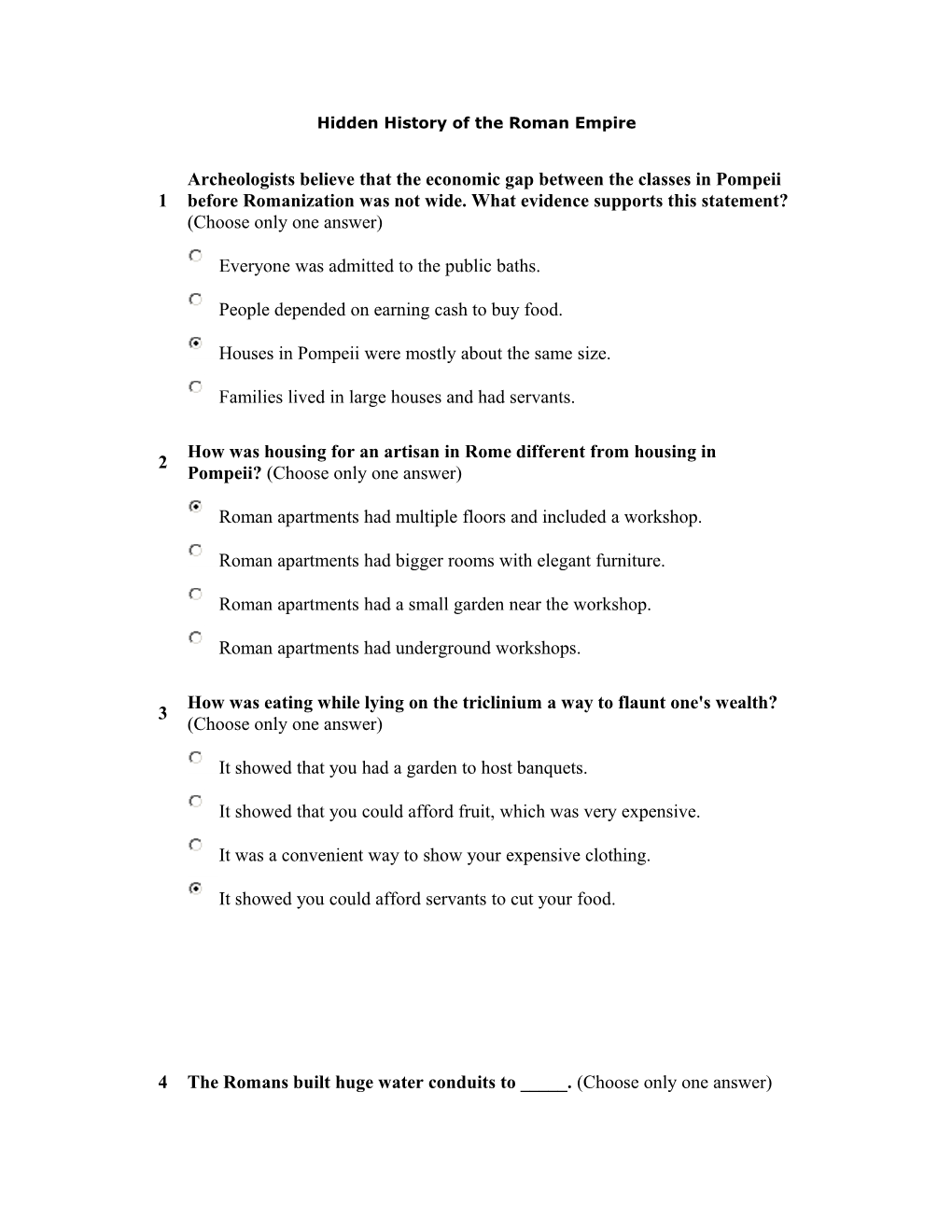Hidden History of the Roman Empire
Top of Form
1 / Archeologists believe that the economic gap between the classes in Pompeii before Romanization was not wide. What evidence supports this statement? (Choose only one answer)
Everyone was admitted to the public baths.
People depended on earning cash to buy food.
Houses in Pompeii were mostly about the same size.
Families lived in large houses and had servants.
2 / How was housing for an artisan in Rome different from housing in Pompeii? (Choose only one answer)
Roman apartments had multiple floors and included a workshop.
Roman apartments had bigger rooms with elegant furniture.
Roman apartments had a small garden near the workshop.
Roman apartments had underground workshops.
3 / How was eating while lying on the triclinium a way to flaunt one's wealth? (Choose only one answer)
It showed that you had a garden to host banquets.
It showed that you could afford fruit, which was very expensive.
It was a convenient way to show your expensive clothing.
It showed you could afford servants to cut your food.
4 / The Romans built huge water conduits to _____. (Choose only one answer)
provide work for displaced farmers
allow them to indulge their passion for gardens
bring water into the heart of the city
give the rich an expensive way to flaunt their wealth
5 / In the public baths of the Roman Empire, one could distinguish the poor by their tanned and beautiful bodies, because they worked in the fields all day. (Choose only one answer)
true
false
6 / What can be said about middle- and working-class women in the Roman Empire era? (Choose only one answer)
They were in charge of the family's funds.
They enjoyed relative independence.
They were their husbands' servants.
They could divorce, but not keep property.
7 / Which of the following statements is NOT true? (Choose only one answer)
Roman slaves could be crucified.
Roman slaves were mostly war prisoners.
Roman slaves were only owned by the ruling classes.
Roman slaves were less than half of the population of the time.
Bottom of Form
Hidden History of the Roman Empire
